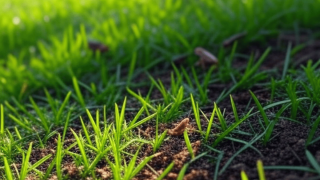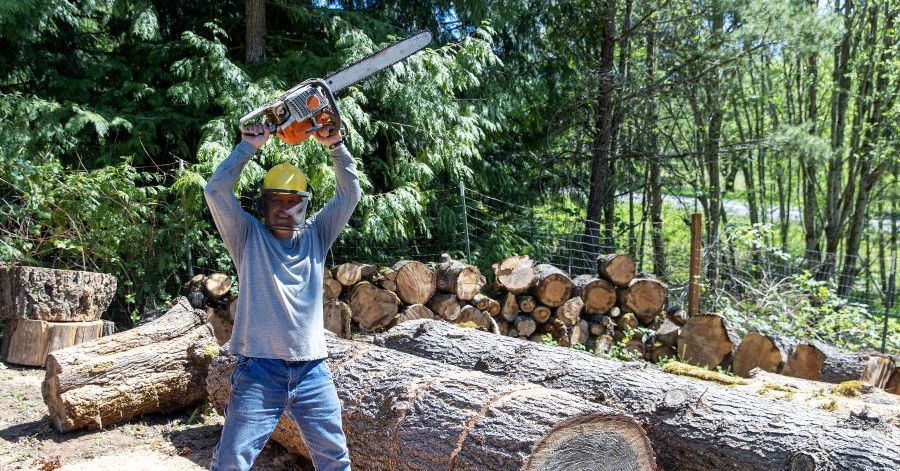Mole crickets are a serious pest. They live underground and feed on roots. This makes them hard to see—but the damage they cause can be big. At Strobert Tree Services, we want to help you protect your yard. Here’s how to identify, control, and prevent mole crickets in your lawn or landscape.
Identification and Biology
Mole crickets are not your average insects. They look like a mix between a cricket and a tiny mole.
Here’s what to look for:
- Light brown body, up to 2 inches long
- Large front legs for digging, like a mole
- Long antennae
- Wings and the ability to fly
They live underground and come out at night. Mole crickets lay eggs in the soil, and when they hatch, the young (called nymphs) begin feeding on roots right away.
They mostly feed on grass roots but can damage small plants too. In large numbers, they can destroy entire patches of turf.
Monitoring and Detection
Since they live in the soil, mole crickets aren’t easy to find. But there are signs to watch for:
- Spongy or thinning grass
- Brown, dying patches in the lawn
- Raised tunnels or loose soil on the surface
- Increased bird activity (they love eating mole crickets)
You can do a simple soap flush to check for them.
Mix 2 tablespoons of dish soap in a gallon of water. Pour it over a 2-square-foot area of your lawn. In a few minutes, mole crickets will crawl to the surface.
If you see more than 3 or 4, you probably have an infestation.
Control and Management Strategies
Controlling mole crickets takes a mix of timing, tools, and technique. Here are the best ways to fight back:
- Timing Matters
Treatments work best when the crickets are young. That’s usually in spring and early summer, right after they hatch. By fall, they’re tougher to kill.
2. Cultural Control
These are safe and simple changes you can make:
- Water less often. Mole crickets like moist soil.
- Mow high. Taller grass can recover faster from damage.
- Use healthy soil practices. Aerate your lawn and add compost when needed.
3. Chemical Treatments
Insecticides can work—but timing is key. Apply them in the evening when mole crickets are active. Water the lawn after treatment to help the product reach the soil where crickets live.
Choose products with ingredients like bifenthrin, imidacloprid, or carbaryl. Always follow the label.
4. Biological Control Options
When dealing with mole crickets, many homeowners are turning to natural solutions instead of harsh chemicals. Biological control uses nature’s own predators—like beneficial nematodes and parasitoid wasps—to keep mole cricket populations in check. One effective method involves using Steinernema scapterisci, an insect-parasitic nematode that seeks out and kills mole crickets in the soil. Another is the Larra bicolor wasp, also known as the Brazilian red-eyed fly, which targets adult mole crickets without harming other insects. These are examples of host-specific biocontrol organisms, meaning they only affect mole crickets and leave other beneficial bugs alone.
This approach is part of what’s called classical biological control, where non-native but natural enemies are introduced to restore population equilibrium. Over time, this can reduce the need for chemical products like carbaryl or other mole cricket baits, which often contribute to insecticide resistance. The goal is long-term, low-impact control. By choosing biological methods, you’re not just managing a pest—you’re helping your yard stay healthy and balanced.
Damage and Impact
Mole crickets are one of the most destructive turfgrass pests. They live underground and feed on roots, which causes serious tunneling and root damage. As they move through the soil, they create surface mounding and loosen the ground, making grass feel spongy underfoot. You’ll often notice brown patches in the lawn that don’t improve with watering or fertilizer. On golf courses, pastures, and home lawns, this leads to turfgrass decline, weed invasion, and weakened root systems that can’t support healthy growth. Because they are an invasive species, mole crickets can spread quickly in the right conditions. Soil temperature and moisture play a big role in their activity.
Warmer, damp soil is ideal for them. While natural predators like birds and beetles help control their numbers, infestations often require more direct action. If you’re seeing signs like tunneling or patchy, thinning grass, mole crickets may be the cause.
Prevention Tips
The best way to deal with mole crickets is to stop them before they start.
- Keep your lawn healthy. A strong lawn can resist and recover from damage faster.
- Don’t overwater. Mole crickets prefer soft, damp soil.
- Watch for early signs. Use the soap test in spring and summer.
- Limit thatch. Thick thatch layers provide shelter. Dethatch if needed.
It’s also smart to rotate your pest control methods. This keeps mole crickets from becoming resistant to treatments.
Resources and Assistance
If you’re unsure, don’t guess. Mole cricket damage can look like other issues. Our certified arborists can help you diagnose the problem.
Strobert Tree Services offers more than tree care. We provide full lawn health assessments and soil checks. If mole crickets are harming your property, we’ll help you create a plan to treat and protect your space.
You don’t have to handle this alone.
Contact Strobert Tree Services
If you're noticing signs of mole crickets or other lawn pests, it's time to take action.
Contact Strobert Tree Services for expert help. Our team offers tree pruning, tree removal, insect and pest management, and full plant healthcare by certified arborists. We work with homeowners across Delaware, Pennsylvania, and New Jersey.
Whether you’re dealing with damaged grass or want to prevent future issues, we’re here to help. Call us today for a free consultation and let us protect your landscape the right way.











